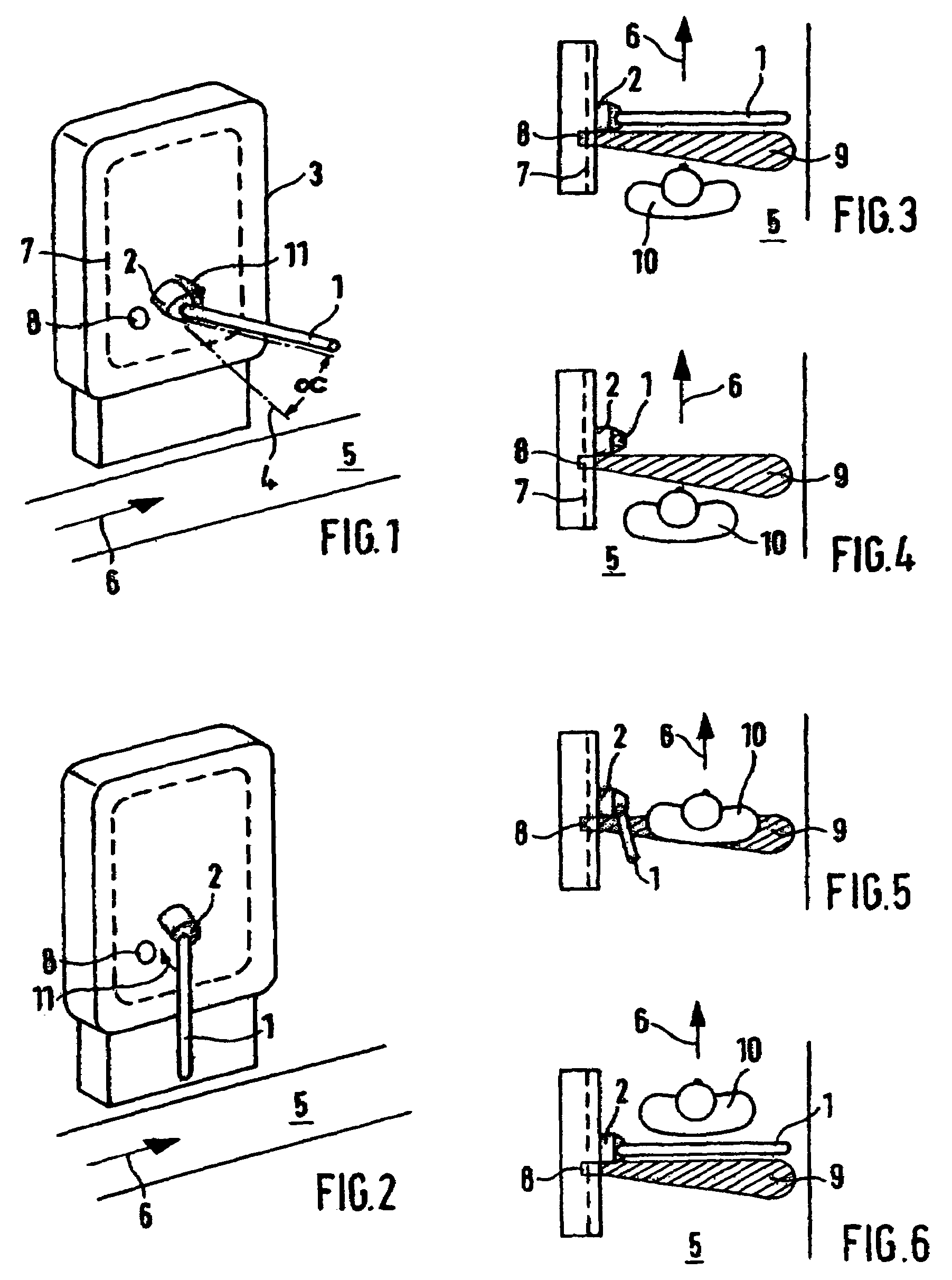Rotating barrier
a technology of rotating barriers and rotors, applied in the field of rotating barriers, can solve problems such as affecting comfort when passing, and achieve the effects of not affecting comfort, increasing the passing speed of users, and reducing the force that acts
- Summary
- Abstract
- Description
- Claims
- Application Information
AI Technical Summary
Benefits of technology
Problems solved by technology
Method used
Image
Examples
Embodiment Construction
[0017]According to FIGS. 1 and 2, the rotating barrier has a blocking element 2 formed as a rotating member with, a blocking arm 1, said element being driven by a motor (not shown) in a housing 3. The rotation axis 4, shown by dashed lines, of the blocking element 2 is inclined downward from the horizontal by an angle α of about 35°. The angle that the rotation axis 4 encloses with the blocking arm 1 can be somewhat larger, being for example 45°.
[0018]While the blocking arm 1 assumes an approximately horizontal position and thus blocks the gateway 5 in the direction of the arrow 6 in the blocking position shown in FIG. 1, it is swiveled approximately vertically downward in the release position shown in FIG. 2.
[0019]The housing 3 also receives the other components, such as the mounting and the gearing and the electronics for operation of the motor and of the blocking element 2. The housing 3 further contains an antenna 7, shown by dashed lines, for an RFID reader module (not shown) f...
PUM
 Login to View More
Login to View More Abstract
Description
Claims
Application Information
 Login to View More
Login to View More - R&D
- Intellectual Property
- Life Sciences
- Materials
- Tech Scout
- Unparalleled Data Quality
- Higher Quality Content
- 60% Fewer Hallucinations
Browse by: Latest US Patents, China's latest patents, Technical Efficacy Thesaurus, Application Domain, Technology Topic, Popular Technical Reports.
© 2025 PatSnap. All rights reserved.Legal|Privacy policy|Modern Slavery Act Transparency Statement|Sitemap|About US| Contact US: help@patsnap.com


